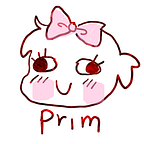Hi World
Today we had a lecture about the circular economy. As I understood, the circular economy is the businesses that are both being the producer and collector when their products are expired.
One of the case study that Eleni mention is Nudie Jeans. This jean brand is a circular business that handles their jeans and denim life from the factory to the customer, repairs them, receives them from the customer and recycles them to be a new pair of jeans. Their business concept is to take responsibility for the impact that they have done on producing clothes.
What are Nudie jeans provide for their customers:
- free reparation
- return an old product to a new product to reduce waste
- 20% off a new pair of jeans when customers return an old pair of Nudie Jeans.
- encourage to use jeans for a long time.
- reselling the garment.
- reusing the fabric to create a new product.
- making patches for repairing.
- making materials for new products.
Eleni gave us an interesting URL for ‘Where you can repair things’ and the map shows the place that I can repair my things around Brisbane where I live
www.handlewithcare.org.au/map
In the next lecture, Eleni talked about the fashion industry and its materials. New materiality is the new way to understand materiality rather than the past. For example, materials can come from anything such as hair, dust, bone, degraded mobile phone. Honestly, I quite a bit left behind on the lecture, and I will review the desirable experience economy and the war on the waste podcast again.
After the lecture with Eleni, our on-campus group were discussing what are the necessary things for the circular economy. Because the air condition was so cool, we went downstairs and sat in the shade outside the building before we start. First of all, Gabriella gave the topic to think about reusing things and their second life. She drew the connection between organisations and the circular economy and discussed which organisation will bring up to fit in the circular economy. Eventually, we chose a supermarket as a case study, named it ‘Nourish hub’, and we thought of the sustainable system inside the Nourish hub. At the end of the discussion, the mind mapping of the supermarket in the circular economy broadened my horizon about managing the ecosystem and it is possible for people who live sustainably in this hub.
This topic, the circular economy, really caught my interest. I might do research more about the circular business and start writing my AT1 report soon.
